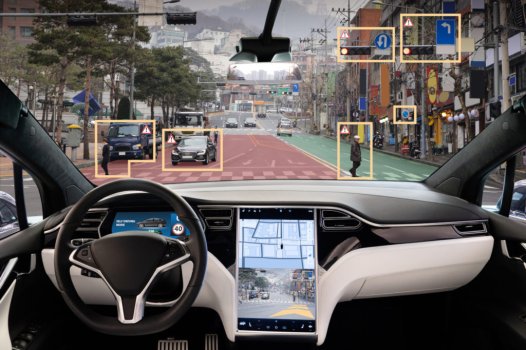K
Kathleen Martin
Guest
The Internet of Things (IoT) in the automotive industry is probably at a more advanced stage than most other verticals. Car manufacturers have been putting sensors into cars for decades. With each passing year, they add more.
“From entertainment, situational awareness (e.g., instruments, status, health, performance, location, tracking), autonomous and semi-autonomous operation, vehicles are a hot spot of technology, and IoT is in the middle of it,” said Greg Schulz, an analyst at StorageIO Group.
“Many vehicles leave the factory with internet-capable devices pre-installed and partially activated with capabilities to unlock, lock, and remote start as well as alerts and diagnostics.
“In addition, those same devices can be used for enabling in-vehicle Wi-Fi hot spots for making calls, navigation, and other functions via your smart device.”
6 IoT Automotive Examples
In many ways, the automotive sector is driving IoT innovation that then bleeds down into other areas. Why? Vehicle sales are worth billions annually and carmakers are using the IoT to add features that differentiate their cars from the competition.
Let’s look at some ways IoT is being deployed in automotive today:
1. Advanced Driver Assistance Systems (ADAS)
ADAS technology is being used by most vehicle manufacturers for collision avoidance, blind-spot monitoring, lane departure warnings, and park assist.
Synchronizing the operation of such systems, or sensor fusion, helps open the possibility of fully autonomous or self-driving vehicles that can monitor their surroundings and warn drivers of the potential road hazards and even take an evasive action to prevent a collision independently of the driver. If a driver is not present, the vehicle’s artificial intelligence (AI) can make optimal decisions.
2. Object Recognition
Hamamatsu works with manufacturers to implement sensor technology, imaging, radar, and LiDAR (light detection and ranging) into advanced vehicles to help them differentiate and recognize objects ahead at high-speed conditions.
Using distance-gauging technology, the system must rapidly construct a 3D map up to a distance of about 100 meters as well as create high angular resolution imagery as much as a quarter mile in advance of the vehicle.
Continue reading: https://www.datamation.com/networks/internet-of-things-iot-in-automotive/
“From entertainment, situational awareness (e.g., instruments, status, health, performance, location, tracking), autonomous and semi-autonomous operation, vehicles are a hot spot of technology, and IoT is in the middle of it,” said Greg Schulz, an analyst at StorageIO Group.
“Many vehicles leave the factory with internet-capable devices pre-installed and partially activated with capabilities to unlock, lock, and remote start as well as alerts and diagnostics.
“In addition, those same devices can be used for enabling in-vehicle Wi-Fi hot spots for making calls, navigation, and other functions via your smart device.”
6 IoT Automotive Examples
In many ways, the automotive sector is driving IoT innovation that then bleeds down into other areas. Why? Vehicle sales are worth billions annually and carmakers are using the IoT to add features that differentiate their cars from the competition.
Let’s look at some ways IoT is being deployed in automotive today:
1. Advanced Driver Assistance Systems (ADAS)
ADAS technology is being used by most vehicle manufacturers for collision avoidance, blind-spot monitoring, lane departure warnings, and park assist.
Synchronizing the operation of such systems, or sensor fusion, helps open the possibility of fully autonomous or self-driving vehicles that can monitor their surroundings and warn drivers of the potential road hazards and even take an evasive action to prevent a collision independently of the driver. If a driver is not present, the vehicle’s artificial intelligence (AI) can make optimal decisions.
2. Object Recognition
Hamamatsu works with manufacturers to implement sensor technology, imaging, radar, and LiDAR (light detection and ranging) into advanced vehicles to help them differentiate and recognize objects ahead at high-speed conditions.
Using distance-gauging technology, the system must rapidly construct a 3D map up to a distance of about 100 meters as well as create high angular resolution imagery as much as a quarter mile in advance of the vehicle.
Continue reading: https://www.datamation.com/networks/internet-of-things-iot-in-automotive/

